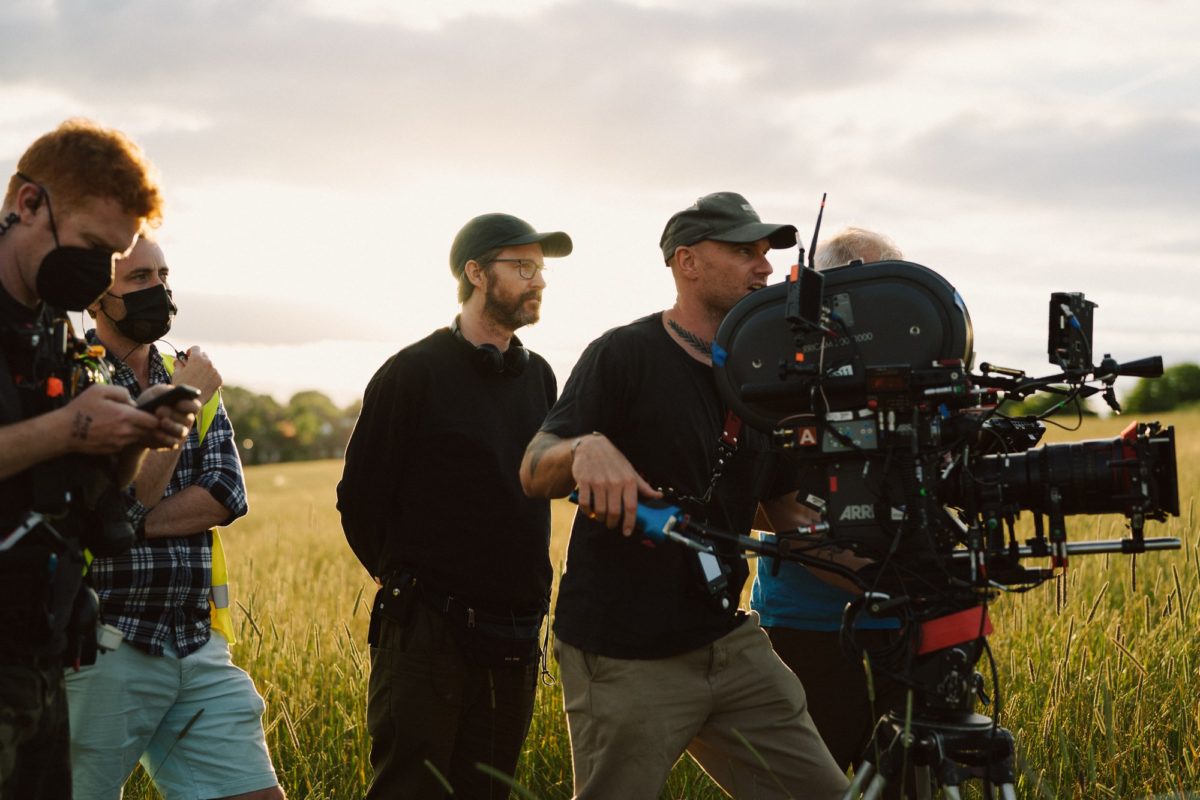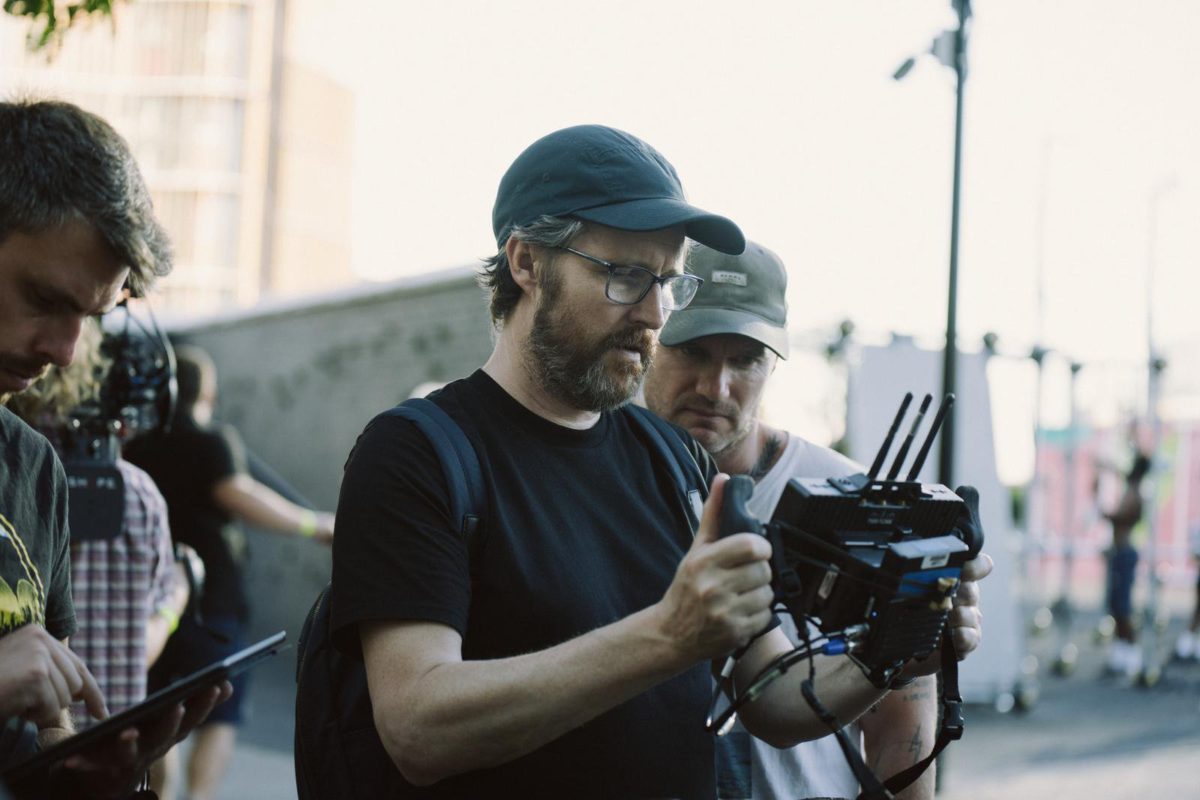In English filmmaker Andrew Haigh’s All of Us Strangers, grief is overwhelming. Emotions run deep, relationships ebb within the span of a scene, and loneliness becomes all-consuming. Haigh’s ephemeral drama follows Adam (a darting Andrew Scott) as he begins a relationship with Harry (Paul Mescal in another role as a broken young man), while he grapples with the death of his parents many years ago. He visits these parents (Claire Foy and Jamie Bell), remembering them as they once were, sleeping in his childhood home, telling them about his childhood, his sexuality, and his immense sadness.
Haigh’s films often contain this amount of emotional weight, this blanket of innate feeling. He oscillates with the novels he chooses to adapt, most recently taking on grim brutality in The North Water––far from the brighter touch of his newest film, even if both stories retain high levels of intensity. With All of Us Strangers, Haigh tells a ghost story, a tale mixing reality and imagination. He leaves the film in the hands of the audience, most of which are weeping by the end of the film. Those tears are likely a byproduct of Scott’s performance, expressive in the twitching of his face, in the amount of exhaustion he constantly shows.
Haigh pulls out immense performances from Foy and Bell as these parents lost in time. Their scenes with Scott center the film, which can drift into untethered scenes, into an ethereality too difficult to hold onto. The writer-director adapted the story from 1987’s Strangers by Taichi Yamada, introducing a queer romance into the story, making major changes to the original source material. The resulting film feels wholly original, brought from Haigh’s own personal experiences, hinging on honesty, emotion, and rawness.
Ahead of the film opening in limited release this week, we chatted with Haigh about that adaptation, about his directorial shooting oversight, and finding a balance between reality and ambiguity.
The Film Stage: The conversations that Adam has with his parents are so frank, so direct. How did you land on that specific tone, especially with such changes in the adaptation?
As you know, in the original story, there’s no queer character. So all of this is obviously a departure from the novel. But I really wanted those scenes to get into the nitty-gritty of an experience that Adam had when he was younger––essentially an experience of a whole generation of queer men who were my generation. It was not easy to come to terms with your sexuality in the ’80s, for obvious reasons. It was a pretty horrendous time to be queer into the ’90s.
But what I found so good about those scenes––and why I enjoyed it, and why it took a long time to write––was they became two things at the same time: they became about what it was like for everybody within that period of time, but it also became very specific about the mother and the son, and the father and the son, and what he needed––or thought he needed––from those people. There’s a world in which, if he’s brought his mum back to life, you would have thought that the scene with the mum might have been just beautiful and lovely and all accepting. But that isn’t what Adam needs. Adam needs something more complicated in order to dig a little bit deeper into his own feelings about internalized homophobia, something that he might have felt growing up. And so I’ve loved the idea that there could be lots of different things within those scenes at the same time.

And those scenes are staged with a consistent pattern of shots. The in-focus character talking is usually behind the shoulder of another person. We almost always see a part of someone in the foreground.
Who Adam is, as a person, is so informed by his parents. So as much as I could, I wanted them all in the same frame. And in the end––when he’s in the diner, for example––they really are part of him. They’re so close to the back of his head, that part of his imagination, his subconscious––which essentially you could read it as a ghost or you can read it as a figment of his imagination, whatever it might be. I felt like I needed them to stay and remain in the same frame as much as I could throughout the whole scenes, basically, whereas other times––when you go much tighter and you’re away from them––that makes sense, too.
But it’s so funny. You want the film to exist where no one really thinks about those things. But all of those are choices. I spent a long time in pre-production trying to work out: what am I trying to make the audience feel at this point? What am I trying to say? How can my shots reflect what doesn’t need to be edited? Is there coverage? Is there not coverage? What does each scene need to do?
It’s funny: as a moviegoer, I’m always wondering if something is intentional or not.
I don’t shoot that much; I don’t shoot a lot of coverage. I know exactly what I want it to feel like.
You mention that people can take it as a ghost story, as imagination, etc, and I’d like to know more about that ambiguity. How do you find that balance between reality and something feeling too ephemeral to even grab onto?
Look: it’s a hard balance. It’s always a barrier. And with this it was really difficult. I know it’s hard, we’re trying to calibrate it. There’s a mystery to it, still, because you’re dealing with very strange emotions, and I want those emotions to feel mysterious. But then you lose everybody because nothing makes sense––then that doesn’t work either. I was just constantly trying to work it from an emotional place. Does this feel right, emotionally, for Adam? Everything is from Adam’s perspective. Does it feel right that we’re going to the right places with him? And you’re taking a risk that it won’t work for everybody.
Some people will be frustrated; some people will love it. Some people think it’s too much; some people think it’s too little. You have to be okay with that and put it out into the world. Being like this is not going to please everybody. They’ll want more clarification, or someone will need more or less clarification. Someone wants it to be more sentimental. Some will think it’s too sentimental, or whatever it might be. I have to feel like it works for me, I suppose.
One of those emotions or ideas in the film is nostalgia, which I’ve seen you mention in other interviews. People usually think of nostalgia around positive memories, though. How were you looking at nostalgia as something more painful and difficult to return to?
The initial feeling of nostalgia is something that is warm and comforting. As you say, “Back in the old days.” But of course it’s a rose-tinted version of the past. And we never move forward, unless you actually dig a little bit deeper into the past. For example, even politically: Brexit in the UK, right, I think was something that happened out of nostalgia for the past that was never real. And I think that’s often what nostalgia does. It can be quite dangerous, nostalgia, because it stops us actually understanding the problems of the past and the things that we need to deal with.
When he first goes down to the house, it’s like, “Oh, this is warm, lovely, and sweet. And it’s gorgeous. We’re going to have such a lovely little time with our parents.” And then you dig a little bit deeper, and then the truth comes out. It’s why I’m fascinated by nostalgia: because there is always something that it’s telling us that we’re pretending doesn’t exist.

In a film with this much emotion and the range of visceral reactions at screenings––like hearing someone sob next to you––what kind of weight does all of that immense emotion hold on you? When you create something with this amount of emotion, how does it affect you?
I’ve always been this kind of person. I’m an emotional person. I find it incredibly cathartic, sometimes, to cry my eyes out in a theater. I remember seeing the animated documentary Flee, which I really loved. I was sobbing by the end of that film. I was a wreck, an absolute wreck, and I couldn’t speak. But then I felt lighter afterwards. I feel like life is very difficult and complicated. I understand that it’s difficult and complicated––we all experience difficult, complicated things. Sometimes we just need to have an emotional reaction and get it out. The whole film is about stuff that we keep buried and we don’t let out. So if an audience has an emotional reaction to it, of course––great. They don’t have to burst into tears, either. I hope that that is a cathartic release, and not just a painful release.
I’ve got to ask about Jamie Bell’s sweaters. They’re so specific––they look worn, perfect for the time.
It’s so funny. I can’t tell you how many photos we looked at––pictures of my dad at that time and pictures of other people’s dads, the costume designers’ dads. They were very specific, sweaters in the ’80s. In the UK they were very specific. Again, it’s funny: it’s actually a good question because I wanted you to be able to feel it. When he hugs his son and you see that sweater, I want you to be able to sort of feel that, almost. And remember what that texture of those sweaters felt like and so much of the film is about feeling. I wanted to express the feeling, not just of loneliness, but of comfort and love and intimacy. How do you do that? Touch is so vital and important and sensual.
All of Us Strangers opens on Friday, December 22.
